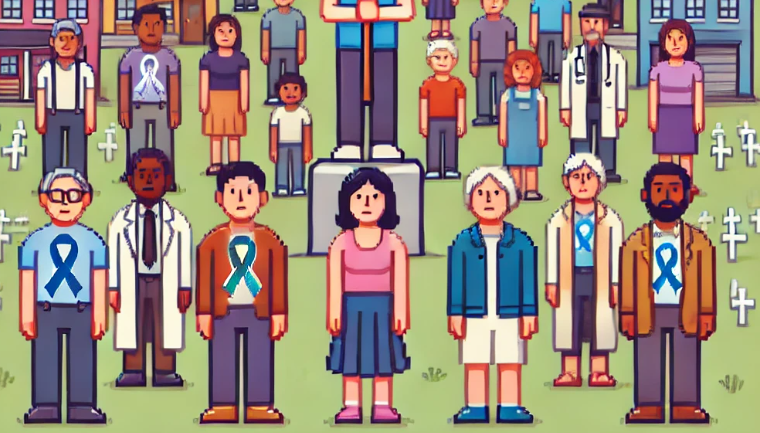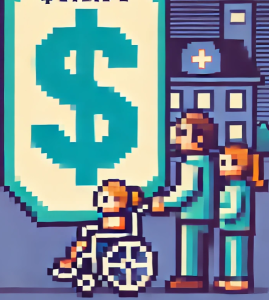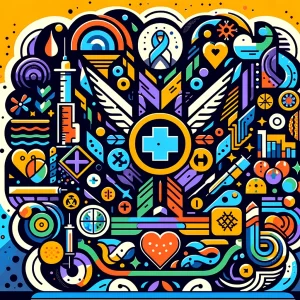
Rare Diseases: Global Progress, Challenges, and Hope
Imagine you’re part of a small town where each family has a unique story, each one different from the others. Now, picture that in the medical world. This is the reality for people with rare diseases. Rare diseases are conditions that affect a small percentage of the population. In the United States, a disease is considered rare if it affects fewer than 200,000 people. In the European Union, it’s any disease affecting fewer than 1 in 2,000 people.
Despite their rarity, rare diseases collectively impact over 300 million people worldwide. The journey for patients and families affected by rare diseases is often filled with uncertainty, delayed diagnoses, and a lack of effective treatments. However, recent advances in research and global collaborations are lighting a path toward hope and better care.
The Global Burden of Rare Diseases
Living with a rare disease can be an isolating experience. Many patients face significant delays in getting a correct diagnosis. Some remain undiagnosed for years. For instance, about 80% of rare diseases have a genetic basis, which means they can be inherited and affect individuals from birth. Shockingly, 30% of children with a rare disease will not live past their fifth birthday.
The economic and psychosocial burdens are immense. Patients often need specialized care and treatments, which can be expensive and hard to find. Families may have to travel long distances to see specialists or participate in clinical trials, adding to their financial strain and emotional stress.
Progress in Diagnosis and Treatment
Thankfully, the medical community is making strides in diagnosing and treating rare diseases. The introduction of genetic testing, newborn screening, and advanced sequencing techniques have significantly improved diagnostic capabilities. Networks like the Undiagnosed Diseases Network (UDN) in the United States and similar initiatives worldwide are crucial in identifying rare diseases more quickly and accurately.
Once a diagnosis is made, the next challenge is finding effective treatments. Here, legislation plays a vital role. The U.S. Orphan Drug Act and the European Union’s Orphan Medicinal Products regulations incentivize pharmaceutical companies to develop treatments for rare diseases. These regulations have led to the approval of numerous orphan drugs, giving hope to patients who previously had no treatment options.
The Role of Patient Advocacy Groups
One of the most powerful forces driving progress in the rare disease community is the rise of Patient Advocacy Groups (PAGs). These groups have transformed the landscape by advocating for research, providing support to families, and raising awareness about rare diseases. They ensure that patients’ voices are heard in the research process and help to recruit participants for clinical trials.
PAGs also educate the public and policymakers about the needs of the rare disease community. Their efforts have led to increased funding for research and better healthcare policies. For instance, organizations like the National Organization for Rare Disorders (NORD) and the European Organization for Rare Diseases (EURORDIS) have been instrumental in these advocacy efforts.
Advanced Technologies and Research
Innovations in technology are revolutionizing how we approach rare diseases. Advances in medical bioinformatics, artificial intelligence (AI), and machine learning (ML) are helping scientists analyze vast amounts of data to identify new treatments and improve patient care. These technologies can predict disease progression, identify patient responses to treatments, and help develop personalized medicine approaches.
Moreover, the use of real-world data (RWD) and real-world evidence (RWE) is becoming increasingly important. These data sources provide valuable insights into how treatments perform in real-life settings, outside of clinical trials. This information is crucial for developing guidelines and making informed decisions about patient care.
Barriers to Treatment Access
Despite these advances, significant barriers to accessing treatments remain. High costs are a major obstacle. Many rare disease therapies are incredibly expensive, sometimes costing hundreds of thousands or even millions of dollars per year. This raises questions about the sustainability and affordability of these treatments.
Different countries are exploring various approaches to make treatments more accessible. These include financial assistance programs, outcome-based payments, and value-based care models. It’s essential to continue dialogues among manufacturers, payers, regulators, patients, and policymakers to ensure that no patient is left behind.
Meeting Global Needs
The fight against rare diseases is a global effort. Initiatives like Enfermedades Raras en América Latina y en el Caribe (ERCAL) are raising awareness and improving access to care in Latin America and the Caribbean. However, there is still much work to be done, especially in developing countries where access to diagnosis and treatment is limited.
Training healthcare providers in genetic medicine and expanding the availability of genetic counselors are critical steps. Telemedicine and mobile health technologies are also promising tools to reach patients in remote areas, ensuring they receive the care they need.
What do you think? Let us know in the comments?
- Have you or someone you know been affected by a rare disease? How has the journey to diagnosis and treatment been?
- What do you think are the most important steps we can take to improve access to care for rare disease patients globally?
Conclusion
The journey for those with rare diseases is often challenging, but progress is being made. Advances in research, supportive legislation, and the tireless work of patient advocacy groups are driving change. By continuing to foster global collaboration and leveraging new technologies, we can improve the lives of millions of people affected by rare diseases. Public health practitioners play a crucial role in this effort by advocating for better policies, supporting research initiatives, and raising awareness.



